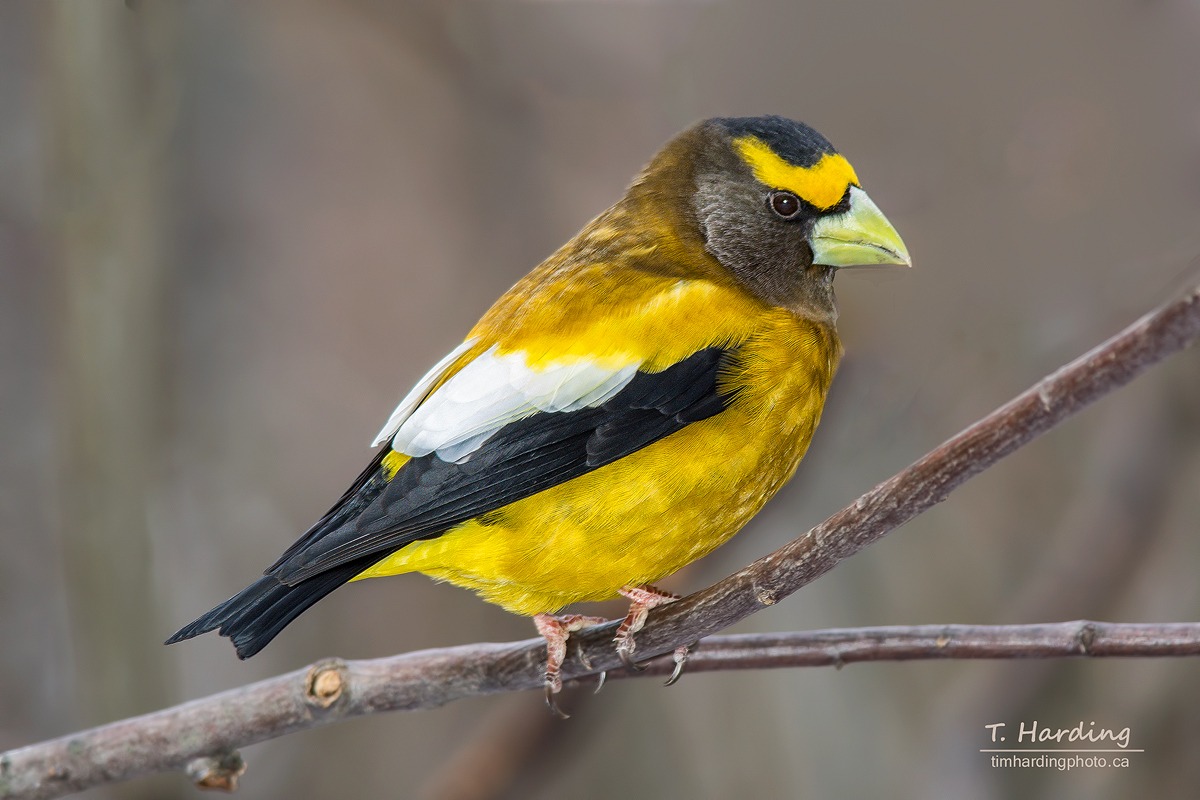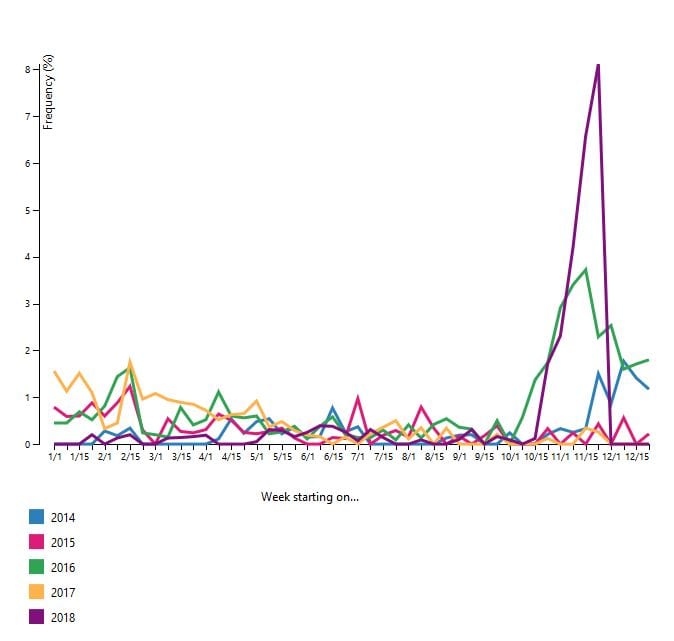
Some lucky Maine birders are seeing some unusual birds at their feeders this winter. They’re yellow, but they’re not goldfinches. They’ve got fat bills, good for crushing seeds, but they’re not House Finches or Eastern Towhees. They’re Evening Grosbeaks, an almost mythical species in Maine and a real treat in the backyard.
Let’s start with the basics. Evening Grosbeaks are finches, related to other seed-eating birds like goldfinches, crossbills, and redpolls. They live year-round in the northern boreal forests of southern Canada, as well as down along Western mountains into Mexico. They’re relatively big — almost twice the size as an American Goldfinch — with a chunky body, short tail, and massive conical bill.

Now that we’re done with the basics, let’s talk about aesthetics. Evening Grosbeaks are absolutely beautiful. Pure eye candy. Their name is in fact derived from the fact that people believed they were more active at dusk — their scientific name Hesperiphona vespertinus means “sound of the evening” — but I always thought it was because their plumage looked like a sunset. Males have a bright yellow eyebrow, which fades down in to a rusty brown and yellow body, offset by black and white wings. Females are more subdued, with a grayish body with yellow collar, and black and white wings. There’s really nothing like seeing this big beautiful finch set down at your feeders, adding a welcome pop of color to an otherwise drab collection of winter birds.
If you can get them to visit, that is. In addition to their beauty, the allure of the Evening Grosbeak is that they’re so hard to come by. In many years these birds don’t leave the forests of their remote northern ranges, meaning most all Mainers outside of the far north can go years without an Evening Grosbeak sighting. Other years, though, when a bumper crop of insects boost population numbers or when poor crops force birds to seek food elsewhere, Evening Grosbeaks irrupt into other parts of the country.
The winter of 2018-19 is turning out to be one of those irruption years.
For the past couple months, Evening Grosbeaks have been showing up at feeders far south of their normal range, including all over Maine and as far south as Virginia. Maine Audubon Staff Naturalist Doug Hitchcox got his first ever Evening Grosbeak at Gilsland Farm on Oct. 25 during his weekly bird walk, when he heard the grosbeak’s flight call overhead (listen here at the Cornell Lab of Ornithology website).
Keep your feeders stocked if you’d like to try to see Evening Grosbeaks at your feeders. They’re especially attracted to black oil sunflower seed, and are also known to eat suet (both sold at our nature store at Gilsland Farm!). Keep your eyes out for this flying sunset this winter, and savor the sighting because it might be years before they return!
